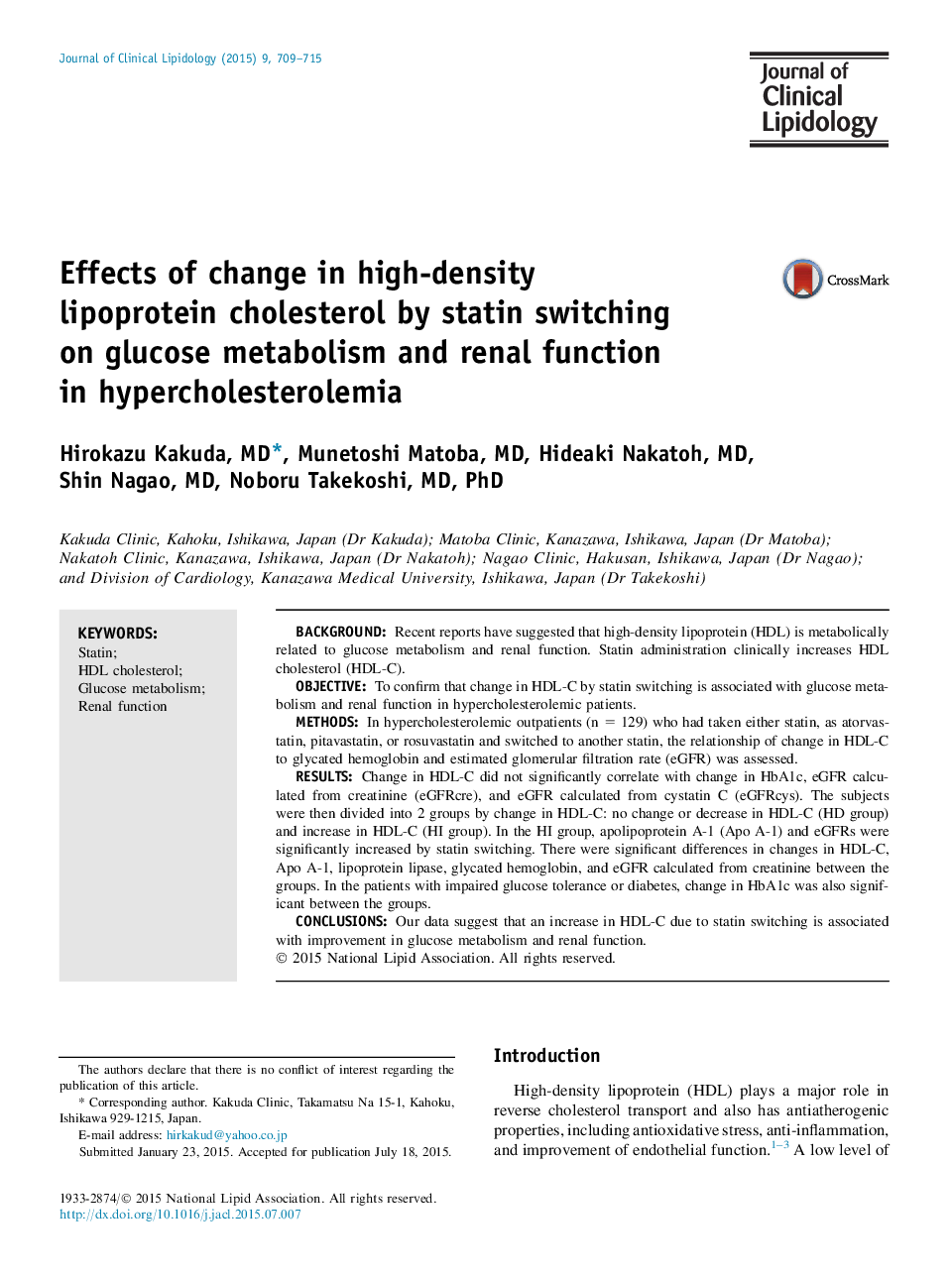| Article ID | Journal | Published Year | Pages | File Type |
|---|---|---|---|---|
| 2965880 | Journal of Clinical Lipidology | 2015 | 7 Pages |
•High-density lipoprotein (HDL) is related to glucose metabolism and renal function.•The benefit of an increase in HDL-C by statin switching is unclear.•An increase in HDL-C by statin switching lowered glycated hemoglobin.•An increase in HDL-C by statin switching increased estimated glomerular filtration rate value.
BackgroundRecent reports have suggested that high-density lipoprotein (HDL) is metabolically related to glucose metabolism and renal function. Statin administration clinically increases HDL cholesterol (HDL-C).ObjectiveTo confirm that change in HDL-C by statin switching is associated with glucose metabolism and renal function in hypercholesterolemic patients.MethodsIn hypercholesterolemic outpatients (n = 129) who had taken either statin, as atorvastatin, pitavastatin, or rosuvastatin and switched to another statin, the relationship of change in HDL-C to glycated hemoglobin and estimated glomerular filtration rate (eGFR) was assessed.ResultsChange in HDL-C did not significantly correlate with change in HbA1c, eGFR calculated from creatinine (eGFRcre), and eGFR calculated from cystatin C (eGFRcys). The subjects were then divided into 2 groups by change in HDL-C: no change or decrease in HDL-C (HD group) and increase in HDL-C (HI group). In the HI group, apolipoprotein A-1 (Apo A-1) and eGFRs were significantly increased by statin switching. There were significant differences in changes in HDL-C, Apo A-1, lipoprotein lipase, glycated hemoglobin, and eGFR calculated from creatinine between the groups. In the patients with impaired glucose tolerance or diabetes, change in HbA1c was also significant between the groups.ConclusionsOur data suggest that an increase in HDL-C due to statin switching is associated with improvement in glucose metabolism and renal function.
